Used car buying checklist: simple checks for used car buyers
Buying a used car can be a great way to get a brilliant car at a bargain price. Here’s what you need to look for

While buying a new car is the only way to go for many, a lot more motorists buy used cars every year – around seven million of them. Buying used can be a great way of grabbing a bargain, and you can get more car for your money on the used market than you would if you were buying fresh from the showroom.
Of course, used car buying comes with its own set of pitfalls. There are plenty of things to check in order to avoid paying too much or ending up with a car that’s unreliable or in poor condition. The golden rule is to make sure your head rules your heart and do your research before making that purchase. This used car checklist has all the key things to look out for when inspecting a used car and its documentation.
Best second-hand and used cars to buy this year
As always, if you’re not sure about any used car, walk away. That might be hard if you’ve got your heart set on a particular car, but the chances are another virtually identical model, or even a better one, will come up for sale very soon.
Only some of the points below should be show-stoppers for your purchase. You can use the more minor problems to your advantage by haggling money off the car’s price, or insist that the seller carries out the relevant repairs before you drive it away.
If you’re buying privately, you’ll be responsible for spotting all of these potential problems. While the seller doesn’t have to volunteer much information, it’s down to you to do your homework and ask the right questions. Buying from a dealer gives you certain legal rights, and the car must be fit for the purpose it’s intended for.
Buying from a main dealer’s approved used car scheme is the safest and simplest approach. Approved used schemes mean the cars will have a full service history, undergo a comprehensive mechanical check, should be in impeccable condition and, depending on the scheme, may even come with an extra warranty and breakdown cover.
Read on for our used car buying checklist to discover the key things to watch out for when buying a used car:
Check the used car’s engine
The engine is the heart of the car, and while they put up with a huge amount of wear and tear, the number of components inside and the tight tolerances they operate under mean good maintenance is essential.
Engine leaks
One of the easiest things to spot are leaks. There are many different fluids that run in, around and under the engine, and a well-maintained car shouldn’t spring a leak.
When you view a used car, check underneath for signs of an oil leak. If there’s oil on the tarmac under the car, or lots of sludge under the car it has, or has had, an oil leak. The sludge under the engine is caused by road dirt sticking to the oily underside of the engine.
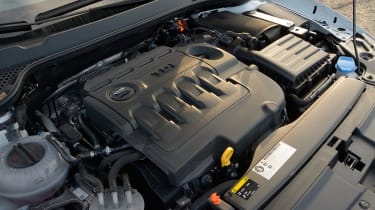
Open the bonnet and check all around the engine for other leaks. Oil leaks are usually brown or, if the engine oil is old, black, but there are other fluids that are prone to seeping out. Coolant (also known as antifreeze) is usually green, pink or yellow while gearbox and power steering fluid is reddish brown. Gearbox fluid is quite thick, while power steering fluid is thinner.
If you see any of this leaking, you have a few options. You can ask for money off the price in order to get it fixed yourself, or you can insist the seller fixes it as part of the deal. Or you can walk away and seek out another car. Either way, it’s worth getting it seen by an expert via a pre-purchase inspection so you know the exact problem, and what it’ll cost to fix.
Head gasket
The head gasket is a thin part that sits between the lower and upper parts of the engine (also referred to as the engine block and the cylinder head), and prevents coolant or engine oil from entering the engine’s cylinders.
A blown head gasket is one which has begun to leak. This can cause a variety of problems from a smoky exhaust, loss of power or a rough sounding engine through to total engine failure, so it’s important to check for the symptoms.
Check the engine is cool and remove the oil cap from the top of the engine. If you see white, or light brown sludge with the consistency of mayonnaise, you’re probably looking at the result of a blown head gasket. At that point, it’s probably worth walking away from the deal, as it’s hard to know what other damage the problem has caused.
Exhaust smoke colours
Switch on the engine and walk to the back of the car. A little puff of smoke when starting an engine is usually nothing serious, but watch the exhaust for a few minutes as it’s a telltale sign of a problem if it remains.
Blue smoke means the engine is burning oil. That means somehow oil is getting into the cylinders and mixing with the fuel. It could indicate a blown head gasket or problems with the internal engine seals. Either way, the bills could be significant.
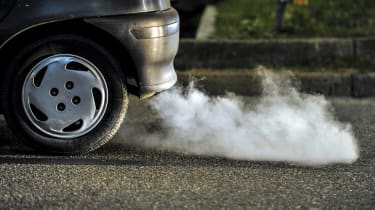
White smoke can be harder to spot as it’s easily confused with steam - a common expulsion when the car is first started, particularly on cold mornings. Excessive white smoke can also point to a head gasket failure, but this time it’ll be coolant entering the cylinders and being burned with fuel.
Black smoke is usually caused by the engine burning too much fuel. It’s usually easier to rectify than curing the causes of white or blue smoke, but can be down to a number of components so it can be harder to pin down the cause.
If you’re still keen to buy a car that’s emitting smoke of any colour, you should always get it checked out by an expert.
|
Issue |
Symptoms |
|
Blown head gasket |
|
|
Engine oil leaks |
|
|
Coolant leak |
|
Check the used car’s gearbox and clutch
Gearbox and clutch checks are less about what you can see and more about what you can feel.
Manual and automatic gearboxes are available, but there are different types of automatic gearboxes which can behave differently. Whatever gearbox the car has, it should engage all gears smoothly and quietly. If it doesn’t, there’s a problem.
In a manual car the clutch biting point - the point that you feel the car start to move when releasing the clutch pedal - should be around the middle of pedal’s travel. If you have to push your foot all the way to the floor, the clutch will need attention. It could be as simple as an adjustment, or a pricey replacement.
You should be able to change gears easily. Resistance or grinding noises also points to a problem.
Whichever type of automatic gearbox you’re testing, make sure you engage all of the gears, make sure the ‘kickdown’ works - the function that changes down gears when you press the accelerator pedal to the floor. If the car has a manual mode, operated either by steering wheel-mounted gearshift paddles or a manual operation on the gearstick, try it out to ensure it works correctly.
It’s worth remembering that CVT gearboxes don’t actually change gear, although in some cars there’s a ‘gear shift’ function that mimics the action of changing gear. Find out more in our guide to manual and automatic gearboxes.
|
Issue |
Symptoms |
|
Gearbox oil leak |
|
|
Gearbox Wear |
|
Check the used car’s bodywork
It’s a fact of life that as cars age, their potential exposure to accidents, damage and rust increases.
That means you should check as much of the car as you can, outside, underneath and, where possible, inside. Old repairs aren’t necessarily a bad thing as long as they’ve been completed properly. They can even help to build a picture of the car’s past and how well it’s been maintained.
Check for rust on all metal body panels. Rust will begin by bubbling under the paint, but left unchecked, it can force the paint off and can eventually rust through, so it’s worth getting it fixed. Untreated stone chips and scratches can trigger rust.
Pay special attention to the car’s wheelarches, especially the edges of the lips inside the wheelarches, as water, salt, road grime and grit can all conspire to cause rust. And also check the car’s sills - the panels that run under the doors on both sides.
You should also look for evidence of crash damage, and more importantly, evidence of poor repairs. In bright daylight, check the body panels are of a uniform colour and look for evidence of ‘overspray’ on glass, rubber seals and plastic trims.
Best used small cars to buy this year
Take a look at the gaps between each panel. The thickness of the gap should be uniform all around the car. If not, the chances are that it’s had a replacement panel, or in some cases, had a shunt big enough to knock the entire chassis out of alignment.
Pay special attention to the front and rear of the car, as this is where low-speed shunts often occur - such as in car parks, against bollards or lamp posts. Lift up the boot carpet. The panels below should be straight and ripple-free. Bent panels under the bonnet can indicate a previous front-end crash as well as welds or evidence of a repaint in a certain area.
|
Issue |
Symptoms |
|
Rust |
|
|
Vehicle has previously been in a crash |
|
|
Poor cosmetic repair work |
|
Check the used car’s wheels and tyres
Check all four wheels, plus the spare wheel if it has one. Look for signs of damage to each wheel. Grazes from kerbstones are common, and aren’t usually a serious problem, but wheels that are bent or have large dents in the rims will need repairing or replacing. If you’re in the market for a more premium car with larger wheels, this can lead to vast expense.
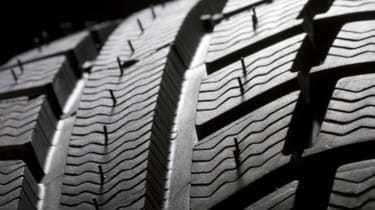
Check all of the tyres too. They should be free from cuts, splits, gouges or bulges; if you see any, they’ll need replacing. The tread should be at least 1.6mm deep around the whole tyre. Uneven tyre wear - where one side of the tyre is more worn than the other - can indicate poor wheel or suspension alignment. That could be caused by a crash, or simply hitting a pothole at speed, but will need fixing.
Tyres that are worn excessively around the middle of the tyre, or around both edges point to consistent under- or over-inflation and will need replacing.
|
Issue |
Symptoms |
|
Tyre damage |
|
|
Tyre wear |
|
|
Poor wheel and/or suspension alignment |
|
Check the used car’s interior
The condition of a car’s interior can help to indicate whether the mileage is genuine. A car with 20,000 miles on the clock should have an interior that’s almost like new - if it’s tired and worn, especially the steering wheel, seat bases and side bolsters, the seller could be hiding something.
Check for rips or tears in the upholstery, holes drilled in the dashboard and a sagging rooflining. A smoker’s car might be prone to burns in the seats too. If you’re happy with the condition, that’s fine, but if you’re not, haggle some money off the price to pay for repairs.
What’s more important is to check all the equipment works, from the lights to the ventilation system (or air-con), to all electric features such as the windows, sunroof, radio and central locking. If the car is more modern, check that the infotainment screens operate correctly too and if relevant, that they’re up-to-date. Budget for repairs if you spot anything.
|
Interior part |
What to look out for |
|
Steering wheel |
|
|
Seats |
|
|
Dashboard |
|
|
Equipment & infotainment |
|
Check the used car’s documentation
The holy grail of used car purchases is a folder crammed with receipts for work carried out. This enables you to check the car’s history for the work carried out and parts fitted. Plus it allows you to check the mileage against what’s displayed on the dashboard. A service book is a valuable document too, as you can see who has serviced the car, and when.
Take a look at past MoT certificates too. The mileage should go up by a similar amount each year. If the mileage suddenly decreases, the car could have been clocked - the illegal practice of ‘winding back’ the mileometer to make the car appear less used than it actually is.
Once you’ve done all this, it’s a really good idea to have a vehicle history check carried out. This will tell you if the car has been written off, subject to outstanding finance or has been recorded as stolen. The checks are cheap, take a few minutes and offer huge peace of mind.
|
Issue |
Symptoms |
|
Winding back the mileometer or ‘clocking’ |
|
|
Hidden issue and/or damage |
|
Check a used used electric car
If you’re looking for a used electric vehicle many of the items in our checklist above will still apply but some do not and there are other things to look out for. The main components of an EV that differ from an internal combustion engined car are the battery and electric motor (or motors) - and while there are less moving components, there is still a great list of things you should check before making the dive into used EV ownership.
Tyres & brakes
Tyres and brakes will need particular attention. Because of the batteries and electric motors, EVs are heavy and this means more wear can occur on certain load bearing components. Some EVs will be fitted with regenerative braking systems, lessening the need to press the foot pedal so this can balance out brake wear.
Check that the brakes work as they should and that they’re in good condition without sponginess or inconsistent travel when in operation - the brakes of an EV can suffer issues purely due to the lack of use when owners rely on the brake energy regeneration system. Have a good look at the tyres for signs of wear, cuts, and general degradation - they typically have to withstand more weight than a petrol or diesel vehicle.
Tech
In terms of the technology and software, ensure that it’s up-to-date and the relevant work has been carried out by a specialist or main dealer, including recall work and software updates. Like your phone or laptop, updates can be installed at home via over-the-air updates, so make sure the screens and their features don’t lag or run into any glitches.
The updates are designed to keep the software running properly and even improve other aspects of the car, including range. Make sure the charging cable is in good condition and plugs into the car correctly.
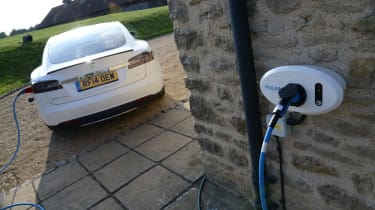
Electric motors & batteries
The most prominent worry for electric vehicle buyers is the condition of the batteries after a period of time. Truthfully, the recent influx of EVs haven’t been on sale long enough to fully judge the longevity of the batteries but increasing numbers of electric cars are covering high mileages and there have been few reports of problems beyond the expected decline in battery charge capacity over time.
Manufacturers will offer warranties lasting anywhere from five to eight years, so it’s worth checking the warranty on the car you’re interested in to determine how much of the factory warranty is left. Typically, manufacturers will only cover a degraded battery if it has lost more than 30% of its factory capacity within the warranty period. Anything less is considered normal wear and tear. If you have doubts about an electric car’s battery, it’s possible to get a battery health check at a specialist garage.
|
Issue |
Symptoms |
|
Brake problems |
|
|
Tyre wear/damage |
|
|
Software issues or missing updates |
|
|
Battery degradation |
|
Read our guide to the best used SUVs, or see which is best for you: new, nearly new or used.
Recommended
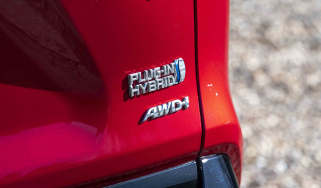
Petrol and diesel car ban relaxed with hybrids permitted beyond 2030

Classic car tax exemption: which historic vehicles qualify?

Car warranties: guide to new and used car warranties
Most Popular
Tips & advice

Car dashboard warning lights: what does each symbol mean?

Electric car charging stations: public networks, charger types, apps and maps







